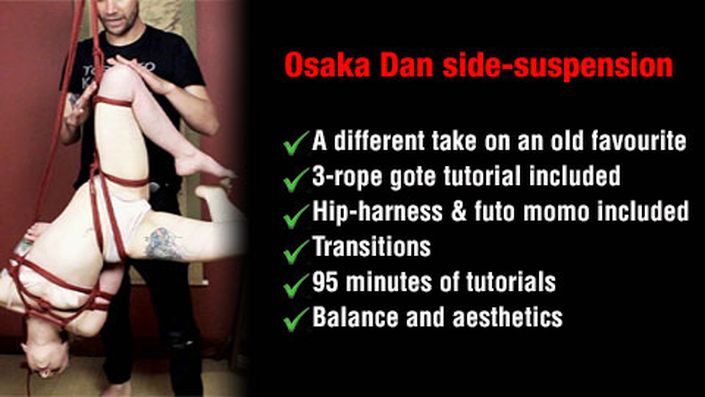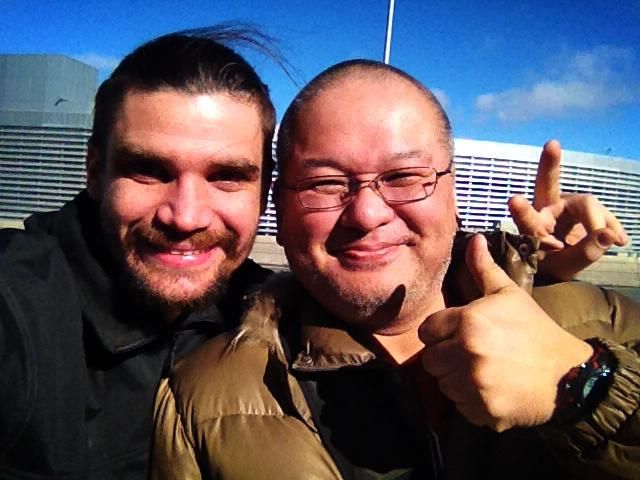
Osaka Dan: Side suspension
Osaka Dan's Kazami-ryu influenced suspension sequence
Dan style side suspension
This side suspension, based on Dan's Interpretation of Kazami style, focuses on three major ingredients that make for an effective, aesthetic suspension in the Kazami style:
- Balance
- Suspension line creativity
- Adaptation.

Balance
This ingredient has two aspects, the aesthetic, or how the suspension looks, and more importantly how it feels for the model. The aesthetic, in this case, is very much based on triangles.
The balance for the model, something that is much more subjective. You'll be shown how this is achieved through heights of carabiners and the lengths of the suspension lines and, of course, partner feedback. To this end, we included the practice sessions with the feedback and interaction that preceded the tie for the tutorial.
One challenge is being aware of the balance and aesthetic; a case of not being able to see the for for the trees. In this tutorial, Dan reveals his simple method for checking, which will give you a new perspective on your work.
Suspension line creativity
There are two examples of using suspension lines in a creative manner in this suspension. The first uses the left over rope from the futo momo to 'crank' and 'open' the torso, adding to the overall balance.
The second, leading on from the tailing used to achieve the 'side accent' in the Partial Suspension in the previous lesson, the tail of the main line is used in a slightly more exotic manner and position by grabbing the calf before releasing the ankle to create an accent and a rather sadistic balance.
This secondary usage of a main line is another way to build speed, efficiency and effectiveness into your tying. These criteria are especially important in suspension when time is often at a premium.

Adaptation
This idea of being flexible and open minded in the execution of our suspensions, with the safety and comfort of our partner being number one in our minds, is core to Kazami style.
Not everyone you suspend will be a hardcore masochist, so knowing how to mitigate discomfort is essential to being able to adapt to your partner's needs. In the case demonstrated, the adaptation is very simple, the addition of the hip line, to take up some of the weight, to make it more bearable. Once again, you will learn an important 'ingredient' that can be used in other suspensions.
Extra tutorials included
In addition to the tutorials covering the suspension itself and the all important rope labbing, the following are also included:
- 2 and 3-rope gote (TK)
- Hip-harness
- Futo momo
Your Instructor

Dan, pictured left, first discovered the art of kinbaku whilst on a working holiday in Japan in 2009. After studying under Milla Reika, __S__, and extensively under Kazami Ranki (pictured right), he moved to Toronto where he owned and operated the Toronto Kinbaku Salon.Osaka Dan teaches Kazami style shibari and is know for his bold, dynamic, erotic performance style. Osaka Dan is fascinated by deep, complex and multi layered personal exchanges that different aspects of the art can evoke.
Frequently Asked Questions
Managing subscriptions
• For your convenience, subscriptions auto-renew at the end of the period
• You can unsubscribe via Manage Subscriptions on the Profile menu (top right when logged in)
• For instructions, see Help
